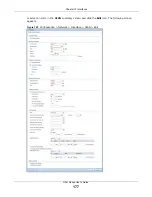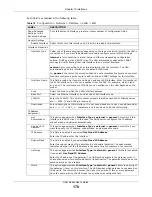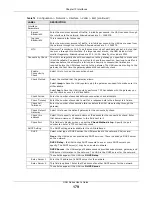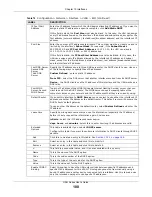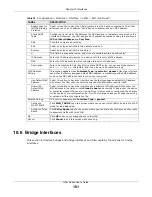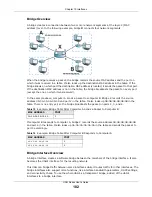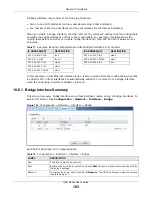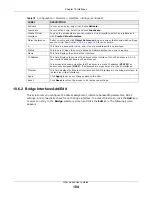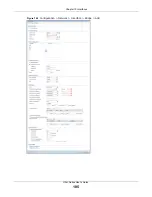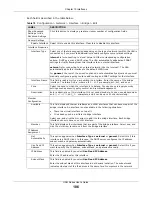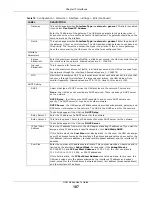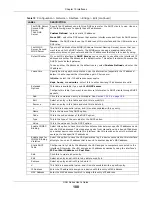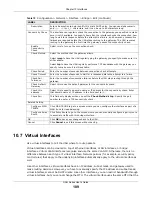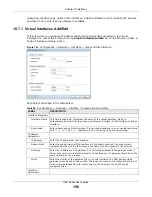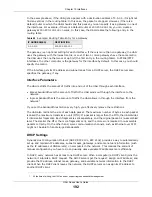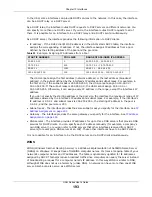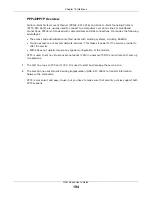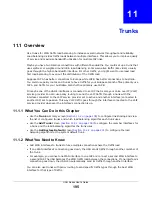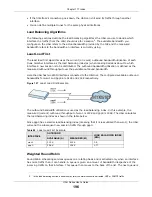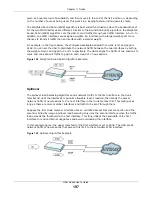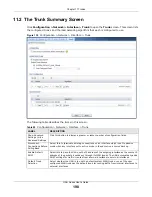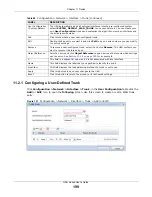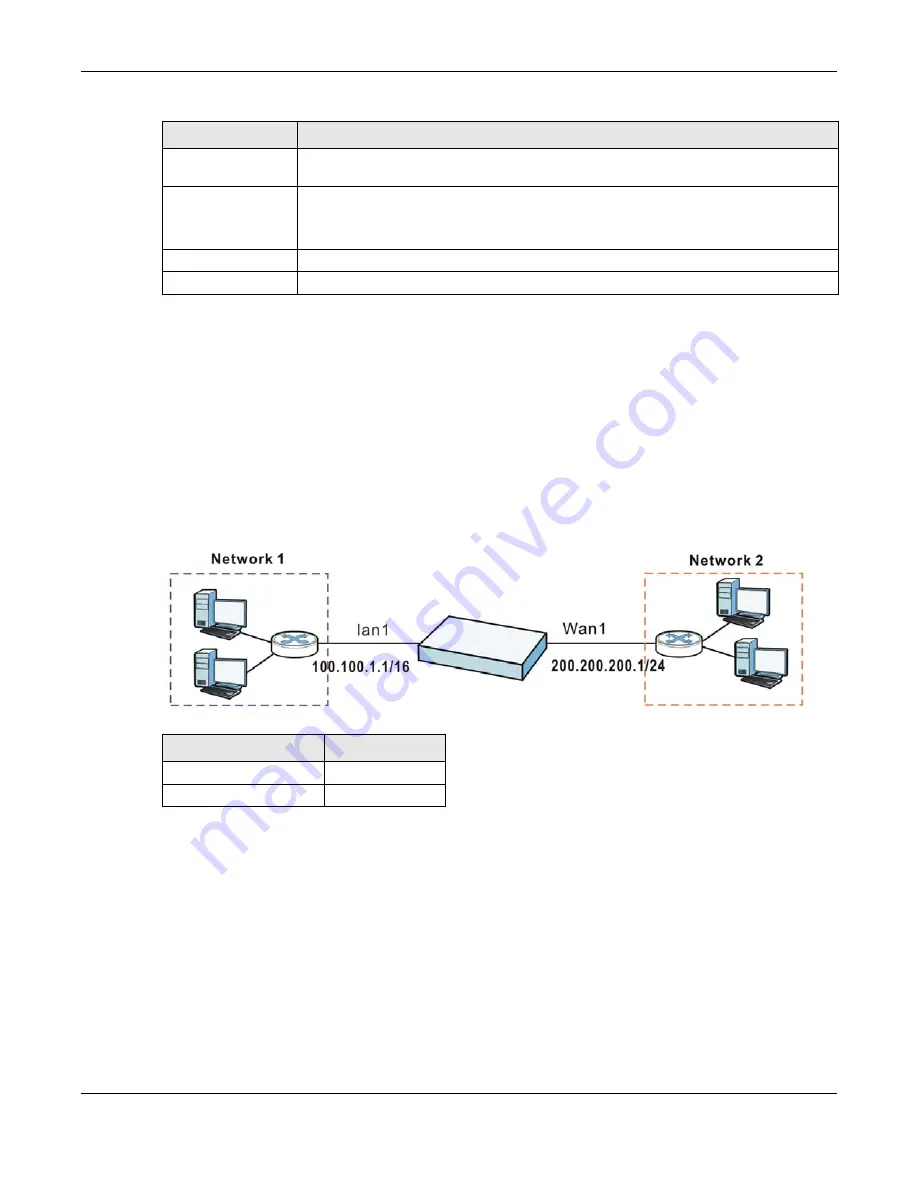
Chapter 10 Interfaces
UAG Series User’s Guide
191
10.8 Interface Technical Reference
Here is more detailed information about interfaces on the UAG.
IP Address Assignment
Most interfaces have an IP address and a subnet mask. This information is used to create an entry
in the routing table.
Figure 126
Example: Entry in the Routing Table Derived from Interfaces
For example, if the UAG gets a packet with a destination address of 100.100.25.25, it routes the
packet to interface lan1. If the UAG gets a packet with a destination address of 200.200.200.200, it
routes the packet to interface wan1.
In most interfaces, you can enter the IP address and subnet mask manually. In PPPoE/PPTP
interfaces, however, the subnet mask is always 255.255.255.255 because it is a point-to-point
interface. For these interfaces, you can only enter the IP address.
In many interfaces, you can also let the IP address and subnet mask be assigned by an external
DHCP server on the network. In this case, the interface is a DHCP client. Virtual interfaces,
however, cannot be DHCP clients. You have to assign the IP address and subnet mask manually.
In general, the IP address and subnet mask of each interface should not overlap, though it is
possible for this to happen with DHCP clients.
Egress
Bandwidth
Enter the maximum amount of traffic, in kilobits per second, the UAG can send through
the interface to the network. Allowed values are 0 - 1048576.
Ingress
Bandwidth
This is reserved for future use.
Enter the maximum amount of traffic, in kilobits per second, the UAG can receive from
the network through the interface. Allowed values are 0 - 1048576.
OK
Click
OK
to save your changes back to the UAG.
Cancel
Click
Cancel
to exit this screen without saving.
Table 80
Configuration > Network > Interface > Create Virtual Interface (continued)
LABEL
DESCRIPTION
Table 81
Example: Routing Table Entries for Interfaces
IP ADDRESS(ES)
DESTINATION
100.100.1.1/16
lan1
200.200.200.1/24
wan1

